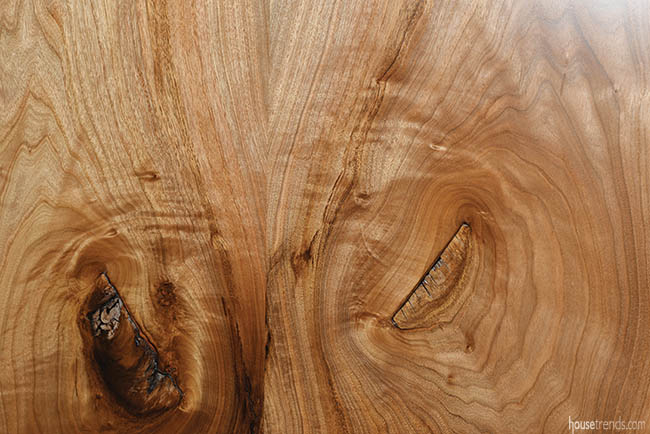Junior Yoder, a Homestead Furniture craftsman, shares his wisdom regarding what makes each type of wood special.
This wood comes from an underground root. You cut through the root to get all of the variations. When you have the roots going in all different directions, that’s where you get all of the burling.
Cherry is a native to Ohio. It’s lighter at the start but turns more amber with age.
Magnolia wood comes from a poplar tree, and its pattern resembles ocean waves. When you put a natural finish on it, this wood will have more of a greenish hue.
Hickory has more of a rustic look–like something you would find in a lodge. It has streaks and color variations that add to the rustic appearance.
Walnut is also a native wood to Ohio, and due to its warm brown color variation, it’s a popular choice.
When Ambrosia beetles dig or crawl into a maple tree, they carry somewhat of a dye inside them. Wherever that beetle drills a hole, it leaves a colored streak. That streak contrasts with the nice white maple, so you have a color variation.
Redwood grows in California or Oregon. We use trees or roots that are left over from pre-deceased trees. We don’t harvest redwood trees. It has a reddish tone and a marbling pattern that give it a different grain and texture.
This wood has been assembled as a book match. When the pieces aren’t wide enough for a project, you straighten the edges on two sides, lay the log open like a book and glue the ends together for a matching color variation. So there’s not a light and dark one together-it looks nice and uniform. Then it’s wide enough for the project.
Some sycamore trees have color variations in the wood, and some don’t. This tree is unique to river bottoms, you don’t find them in ridge tops.









